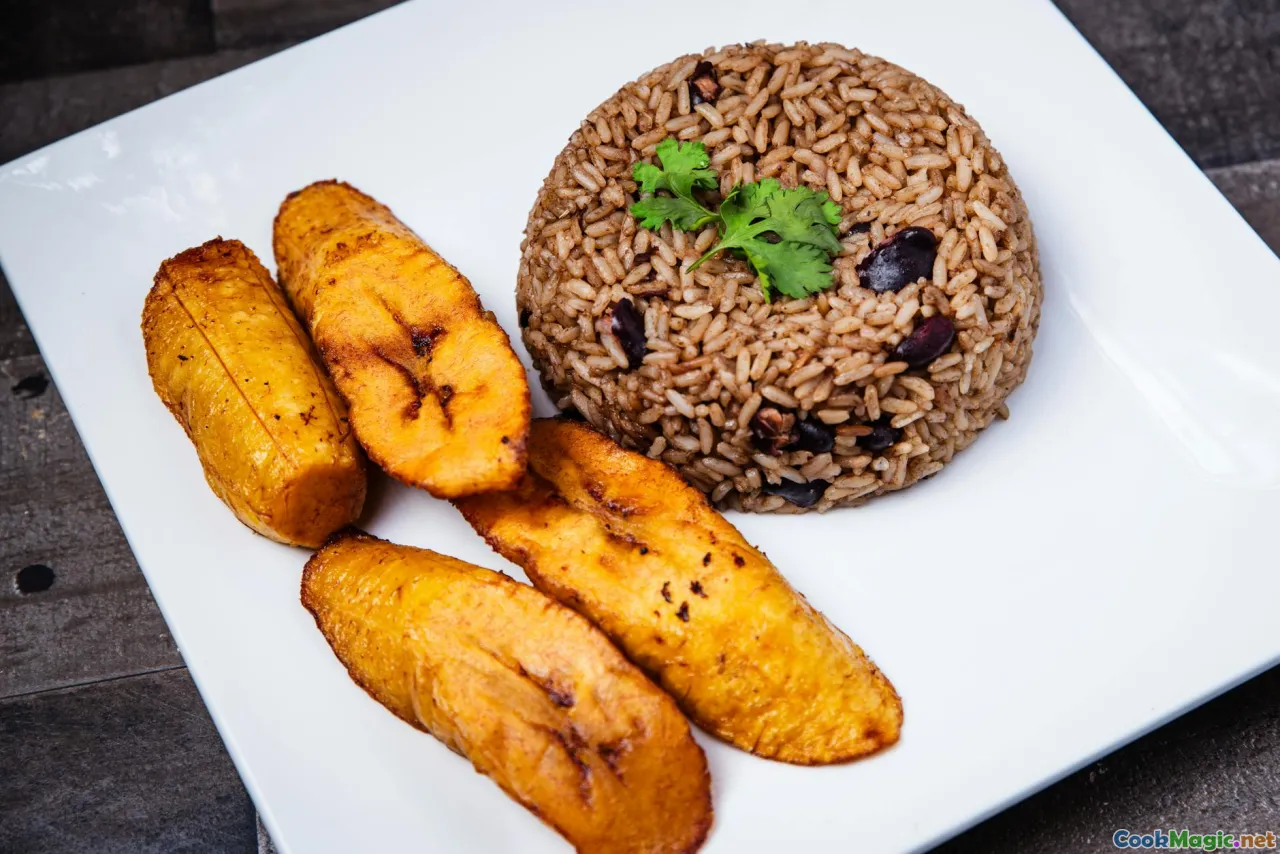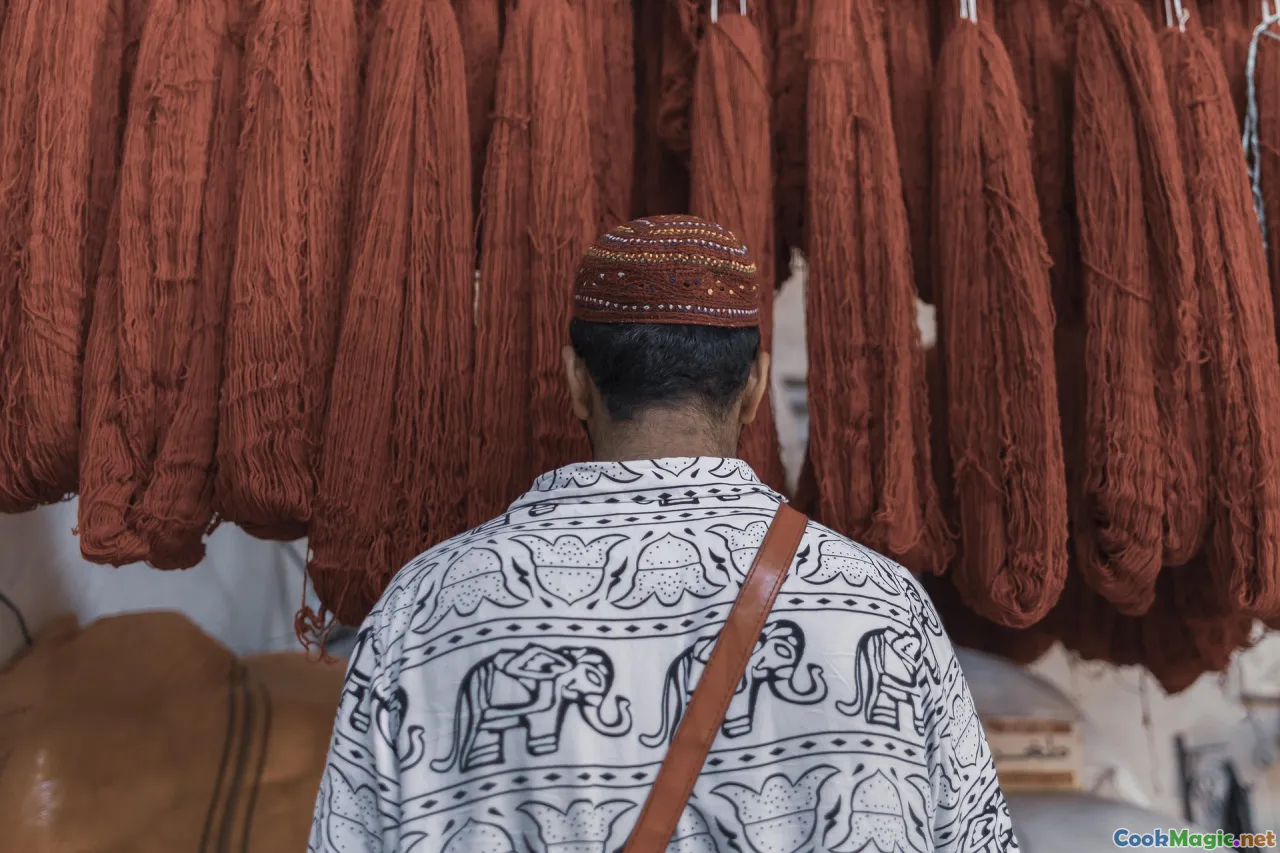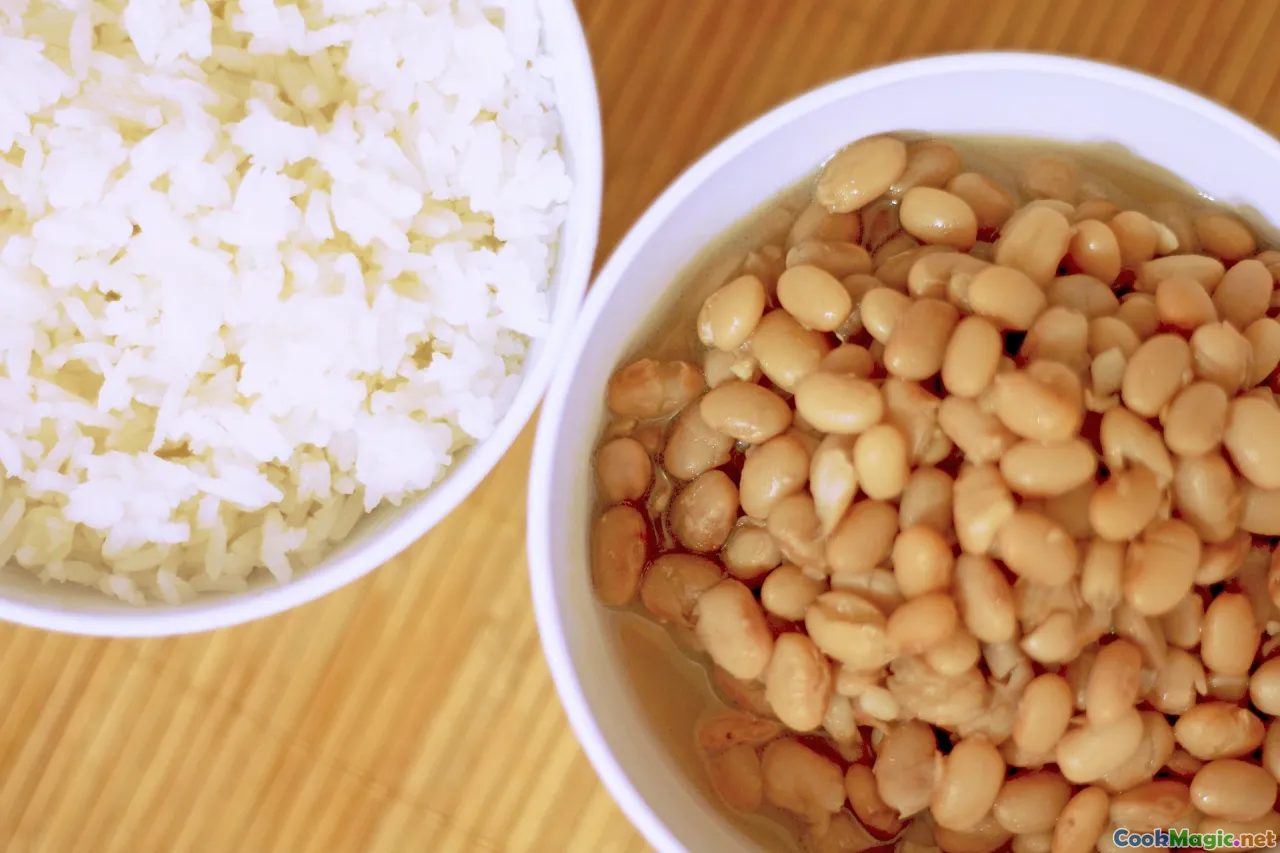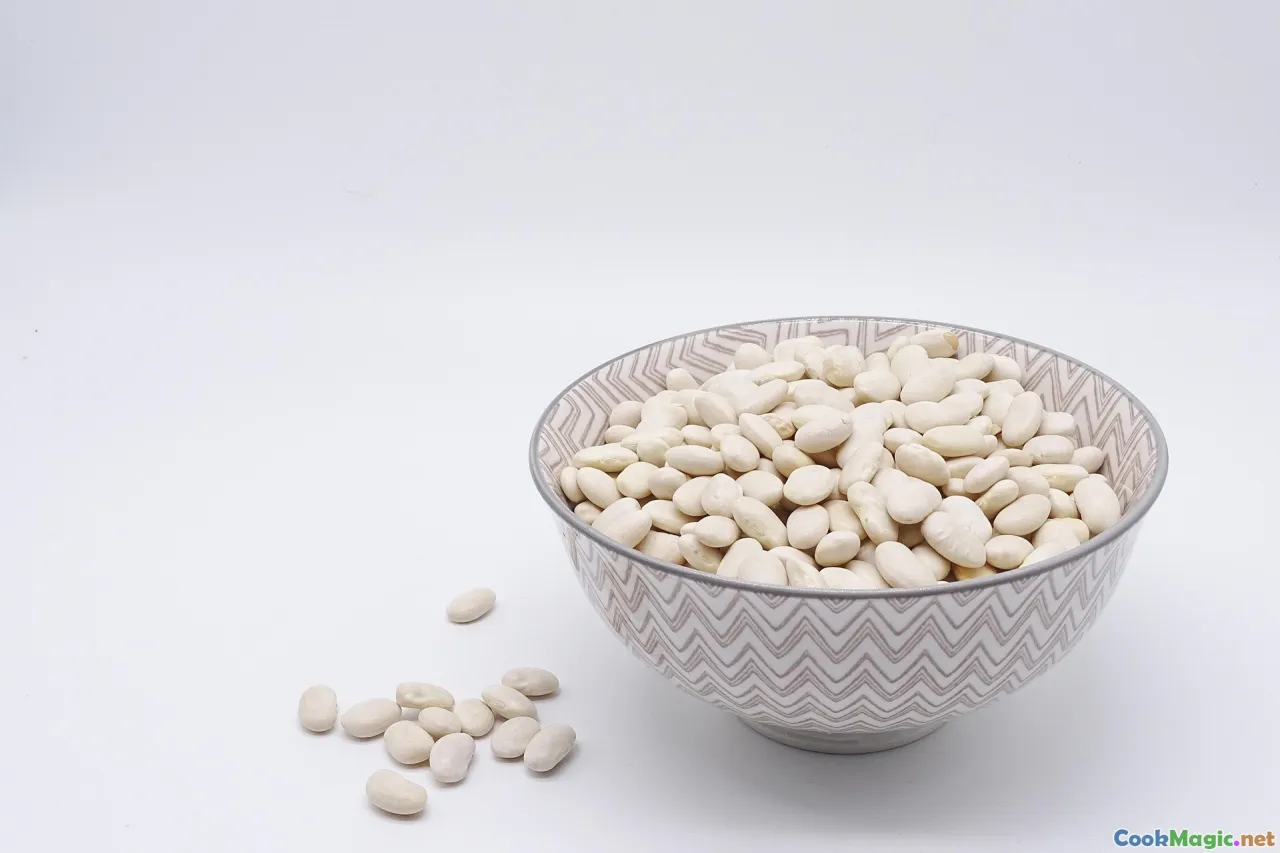Exploring the Flavors of Belizean Rice and Beans
11 min read Discover the rich flavors, cooking techniques, and cultural significance behind Belizean rice and beans in this flavorful culinary journey. September 24, 2025 06:05
Exploring the Flavors of Belizean Rice and Beans
Nestled in the heart of Central America, Belize is a tapestry of vibrant cultures, lush landscapes, and tantalizing flavors. Among its culinary treasures, Belizean Rice and Beans stand out as an emblem of the country’s rich heritage—a comforting dish that tells stories of history, adaptation, and community through every spoonful. For the adventurous eater, this dish is more than just a meal; it's a sensory journey that captures the essence of Belize’s soul, blending earthy spices, tender legumes, and fragrant rice with a touch of local pride.
The Cultural Essence of Belizean Rice and Beans

Belizean Rice and Beans isn’t merely commonplace fare; it’s a cornerstone of everyday life that reflects the country’s diverse cultural tapestry. Rooted in African, Mestizo, Garifuna, Creole, and Mestizo traditions, the dish embodies a mosaic of influences that have melded over centuries. It’s often prepared with black beans—either dried or canned—stewed slowly with coconut milk, aromatic herbs, and spices that evoke a sense of home and history.
In Belizean communities, the dish transcends social boundaries, graced family tables from rural villages to urban restaurants. The aroma of simmering beans, infused with cumin, oregano, and a hint of recado (a fragrant spice blend), wafts through the neighborhood streets, inviting passersby and sparking communal warmth.
A Culinary How-To: Crafting Belizean Rice and Beans

Creating authentic Belizean Rice and Beans at home involves a harmonious balance of textures and flavors. Here's a step-by-step guide that captures the essence of this beloved dish:
Ingredients:
- 1 cup long-grain rice (preferably parboiled or jasmine for aroma)
- 1 cup dried black beans (soaked overnight) or 2 cans of black beans
- 1 cup coconut milk (fresh or canned)
- 2 cloves garlic, minced
- 1 medium onion, finely chopped
- 1 bell pepper, diced
- 1 teaspoon ground cumin
- 1 teaspoon dried oregano
- 1-2 sprigs thyme
- Salt and pepper to taste
- A dash of recado rojo (if accessible)
- Fresh cilantro for garnish
Preparation:
- Prepare the beans: If using dried beans, drain and rinse. Boil in water until tender, about 1-2 hours, adding a pinch of salt near the end. Reserve the cooking liquid.
- Create the base: In a large pot, sauté onions, garlic, and bell peppers in a splash of oil until fragrant and translucent.
- Add spices: Stir in cumin, oregano, thyme, and recado rojo, stirring to coat the aromatics.
- Combine beans and liquids: Add the cooked beans along with some of the bean cooking liquid or water, bringing it to a gentle simmer.
- Add coconut milk: Stir in the coconut milk, allowing the mixture to simmer for 10-15 minutes so flavors meld.
- Prepare the rice: In a separate pot, cook the rice until fluffy. 7.Assemble: Serve the flavorful beans over a bed of fluffy rice, garnished with chopped cilantro.Tip: For added authenticity, cook the rice together with a few teaspoons of coconut milk and a bay leaf to infuse a richer aroma and taste.
The Flavors and Sensory Experience

Each spoonful of Belizean Rice and Beans is a harmony of flavors and textures. The tender, slow-cooked black beans burst with earthy richness, soft yet substantial, providing a satisfying heft that comforts the soul. The rice, infused subtly with coconut milk, offers a fragrant, slightly sweet undertone that balances the savory beans.
Arome fills the air as the dish cooks: the warm scent of cumin, the subtleness of oregano, and the tropical hint of coconut conjure images of Belize’s lush rainforests and coastlines. The dish’s visual appeal lies in its vibrant colors—deep black beans contrasting with pure white rice, topped with green cilantro and occasional flecks of red from recado rojo or diced peppers.
The textures play a pivotal role—creamy coconut milk, hearty beans, and soft grains create a comforting mouthfeel. When served with examples like stewed beef, fried plantains, or tangy Belizean hot sauce, the dish becomes a multi-layered culinary experience.
Regional Variations and Pairings

While the core components of Belizean Rice and Beans remain relatively consistent, regional variations and personal twists add unique character. In coastal villages, coconuts are more dearly integrated, and seafood might supplement the dish. In the inland rainforests, more herbs and local spices find their way into the cooking pot.
Some Belizeans incorporate a splash of hot sauce or chopped pickled vegetables for a tangy counterpoint. Others serve the rice and beans alongside fried fish, crispy chicken, or savory stews—each pairing elevates different elements of the dish.
Traditional accompaniments often include:
- Fried plantains: Caramelized, soft slices that add sweetness and texture.
- Corn tortillas or Canadian tortillas: For wrapping and scooping.
- Pickled vegetables: Brightens the palate with vinegar tang.
- Hot sauce: Amplifies heat and flavor.
The Significance in Belizean Celebrations and Daily Life

Belizean Rice and Beans is more than just nutrition; it’s woven into the fabric of daily life and special celebrations alike. During Christmas, Independence Day, or village fiestas, the dish often graces communal tables as a symbol of unity and shared heritage.
In many households, cooking rice and beans is a weekly ritual—an act of love handed down through generations. It’s a comfort food that rekindles nostalgic memories of family gatherings and warm evenings at home. For Belizeans living abroad, preparing this dish offers a cultural anchor—a way to stay connected to their roots.
Tips for Achieving Authentic Flavor

Authenticity begins with sourcing quality ingredients. Fresh coconut milk and dried beans ensure a richer, more robust flavor. Using local herbs and spices—cumin, oregano, thyme—are essential that cannot be substituted. Here are some pro tips:
- Slow cooking is key: Allow beans to simmer thoroughly until tender and infused.
- Layer flavors: Build the base with aromatics before adding beans and coconut milk.
- Fat balance: Coconut milk provides richness but avoid over-saturating—balance with tangy or spicy elements.
- Use a clay pot or heavy-bottomed pot: This helps distribute heat evenly and enhances the dish’s depth.
- Finish with fresh herbs: Cilantro adds brightness and freshness just before serving.
Final Wildcard: Your Personal Belizean Rice and Beans

Every cook brings a personal touch to this traditional dish. Whether you prefer more spice, added vegetables, or a smoky hint of hickory, Belizean Rice and Beans eagerly accept customization. It’s a canvas upon which your culinary creativity can flourish.
Experimenting with ingredients like diced tomatoes, a splash of lime, or even anchovies for depth can turn a beloved classic into your signature Belizean-inspired masterpiece. The key is respecting the dish’s soul—its comforting core of legumes, coconut, and spice—while making it uniquely yours.
As you delve into the flavors of Belize through this humble yet profound dish, remember: real culinary joy stems from connection—both to the ingredients and to the stories, traditions, and people behind them. Good food, after all, is one of life’s simplest but most potent expressions of culture and love.
Enjoy creating and savoring your own Belizean Rice and Beans journey—one flavorful bite at a time.









